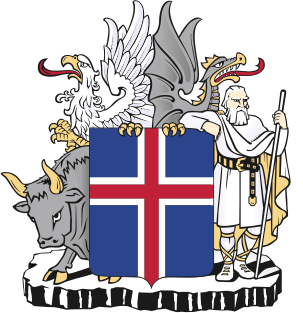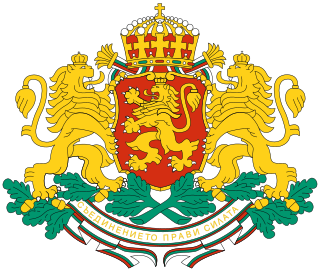The Democratic Party is a center-right party in Bulgaria led by Alexander Pramatarski. The party is a member of the European People's Party (EPP).

General elections were held in Luxembourg on 18 June 1989. The Christian Social People's Party remained the largest party, winning 22 of the 60 seats in the Chamber of Deputies. It continued the coalition government with the Luxembourg Socialist Workers' Party.

Parliamentary elections were held in Iceland on 23 April 1983. The Independence Party remained the largest party in the Lower House of the Althing, winning 15 of the 40 seats.

Parliamentary elections were held in Iceland on 2 and 3 December 1979. The Independence Party remained the largest party in the Lower House of the Althing, winning 14 of the 40 seats.
Parliamentary elections were held in Belarus on 17 October 2004, with a second round of voting in two constituencies on 27 October, and a third round in one on 20 March 2005. The vast majority of successful candidates, 97 of 109, were independents. Voter turnout was reported to be 91.04% in the first round.

Parliamentary elections were held in Hungary between 31 March and 7 April 1935. The result was a victory for the Party of National Unity, which won 164 of the 245 seats in Parliament. Gyula Gömbös remained Prime Minister.

Parliamentary elections were held in Hungary on 8 June 1985. The Hungarian Socialist Workers' Party was the only party to contest the elections, and won 288 of the 387 seats, with 98 of the remaining 99 going to independents selected by the party, whilst one seat remained unfilled until the following year.

Parliamentary elections were held in Iceland on 16 July 1933. Voters elected all 28 seats in the Lower House of the Althing and eight of the fourteen seats in Upper House. The Independence Party emerged as the largest party in the Lower House, winning 13 of the 28 seats.

An independence referendum was held in Latvia on 3 March 1991, alongside a similar referendum in the Republic of Estonia. Known as the "Popular Survey about the independence of the Republic of Latvia", voters were asked "are you in favour of a democratic and independent Republic of Latvia". It was approved by 74.9% of voters, with a turnout of 87.6%. Latvian Republic civilians registered in Soviet Army units also had the right to vote in this poll.
Parliamentary elections were held in Norway in 1832. As political parties were not officially established until 1884, all those elected were independents. The number of seats in the Storting was increased from 81 to 95. Voter turnout was 48%, although only 5.6% of the country's population was eligible to vote.
Parliamentary elections were held in Norway in 1835. As political parties were not officially established until 1884, all those elected were independents. The number of seats in the Storting was increased from 95 to 96. Voter turnout was 52.3%, although only 5.6% of the country's population was eligible to vote.
Parliamentary elections were held in Norway in 1844. As political parties were not officially established until 1884, all those elected were independents. The number of seats in the Storting was increased from 100 to 102. Voter turnout was 49.4%, although only 5.3% of the country's population was eligible to vote.
Parliamentary elections were held in Norway in 1847. As political parties were not officially established until 1884, all those elected were independents. The number of seats in the Storting was increased from 102 to 105. Voter turnout was 49.1%, although only 5.3% of the country's population was eligible to vote.
Parliamentary elections were held in Norway in 1853. As political parties were not officially established until 1884, all those elected were independents. The number of seats in the Storting was increased from 106 to 107. Voter turnout was 45.4%, although only 5.1% of the country's population was eligible to vote.
Parliamentary elections were held in Norway in 1856. As political parties were not officially established until 1884, all those elected were independents. The number of seats in the Storting was increased from 107 to 111. Voter turnout was 44.1%, although only 5% of the country's population was eligible to vote.
Parliamentary elections were held in Norway in 1862. As political parties were not officially established until 1884, all those elected were independents. The number of seats in the Storting was reduced from 117 to 111. Voter turnout was 44.6%, although only 4.8% of the country's population was eligible to vote.

The United Labour Social Democratic Party was a political party in Bulgaria.

The Farmers' Party was a political party in Iceland between 1913 and 1916.
The National Independent Union was a political party in Luxembourg.
The Liberal Party was a political party in Luxembourg in the 1930s and 1940s.









